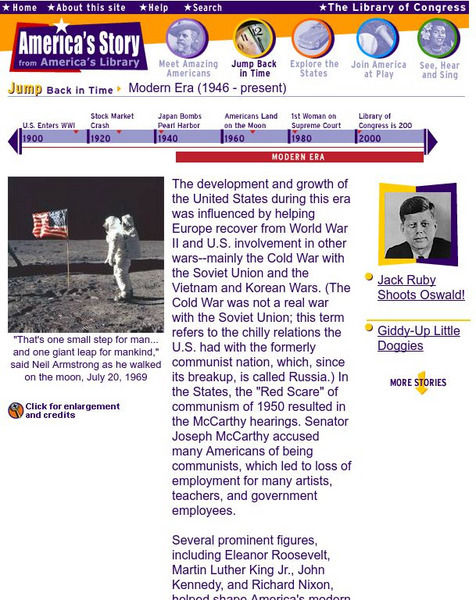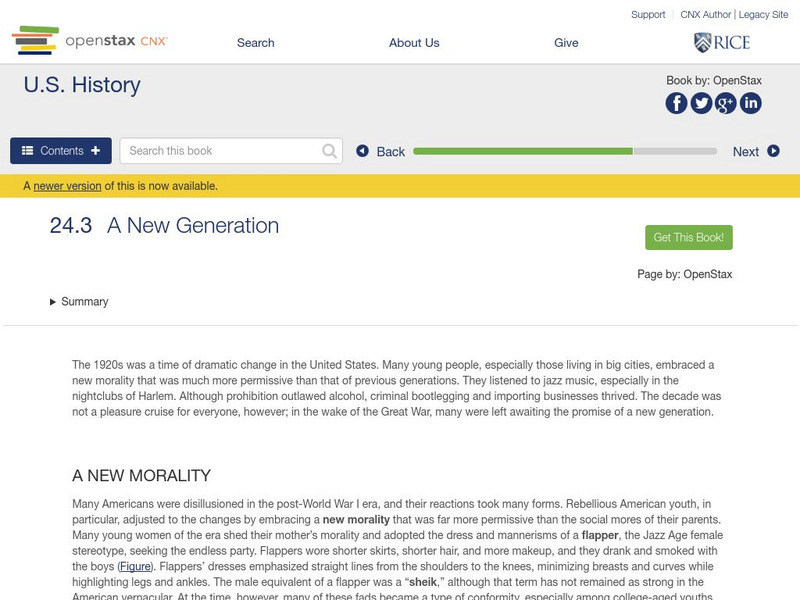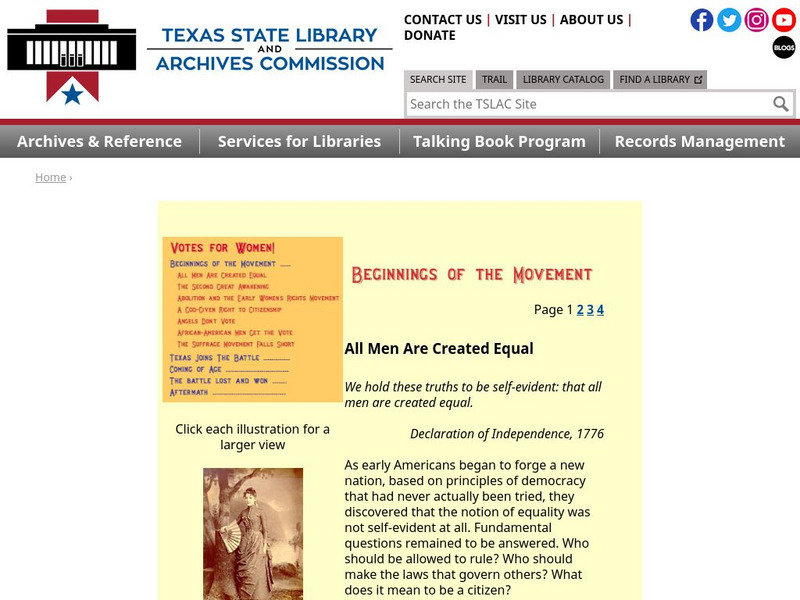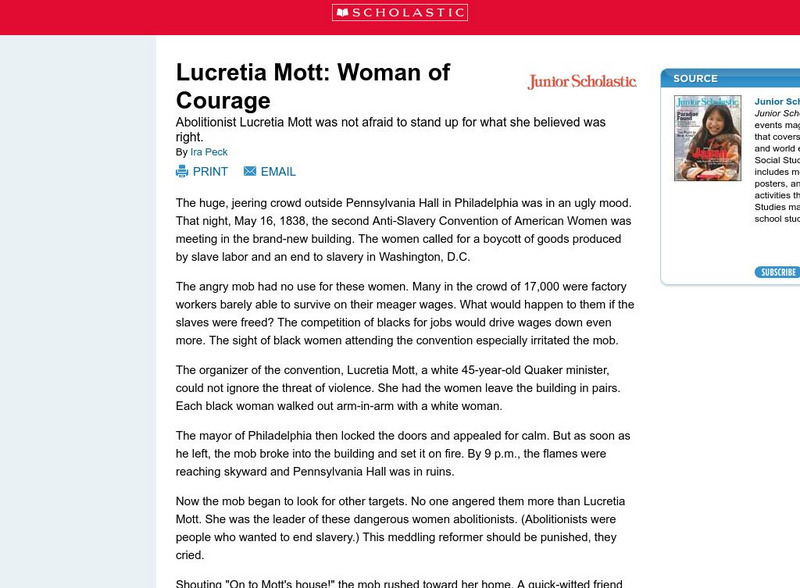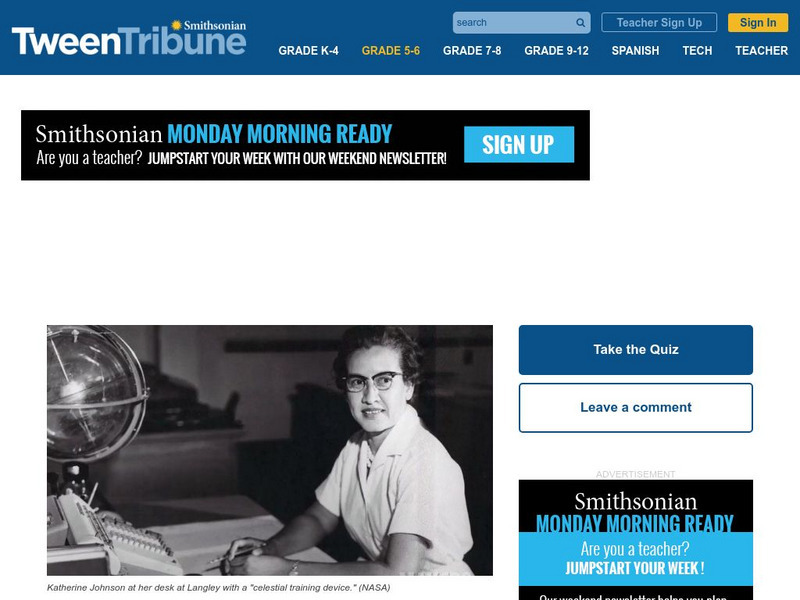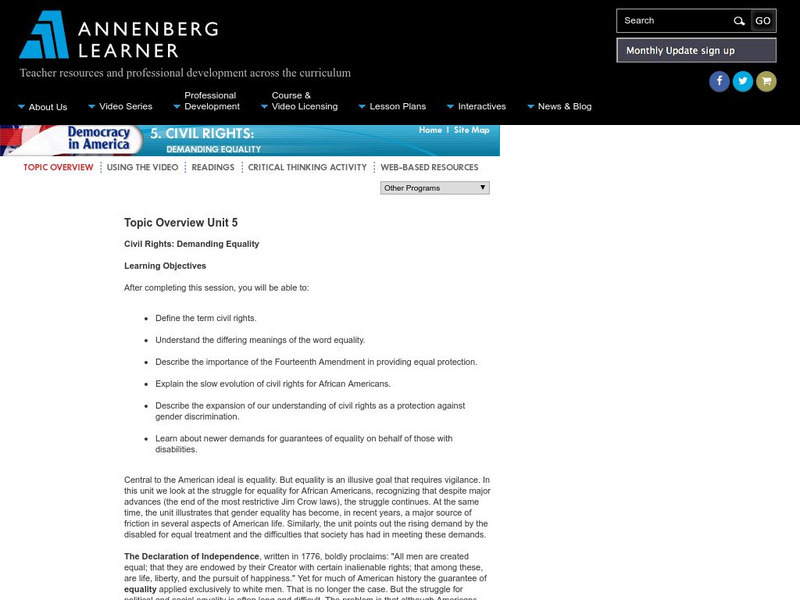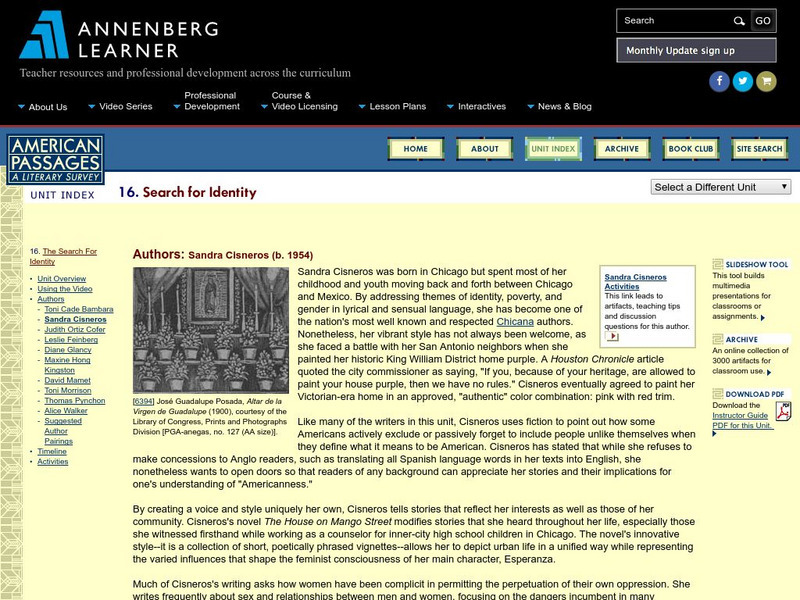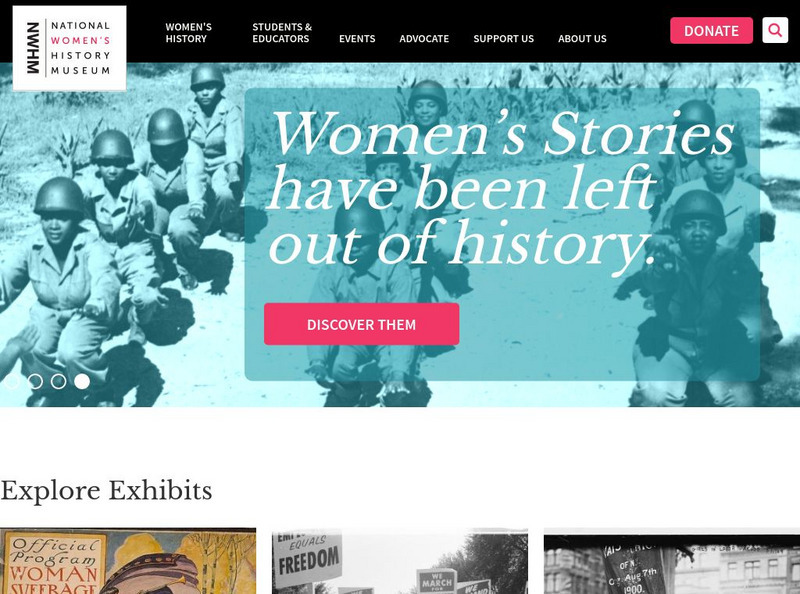National Women’s History Museum
National Women's History Museum: Fannie Lou Hamer
Fannie Lou Hamer was one of the most important, passionate, and powerful voices of the civil and voting rights movements .
Library of Congress
Loc: America's Story: The Modern Era
For a brief overview of the period after World War II until the present, visit this Library of Congress resource. Learn about the Cold War and the first man to walk on the moon.
OpenStax
Open Stax: The Jazz Age: Redefining the Nation 1919 1929: A New Generation
Looks at the new morality that emerged in the 1920s. It changed the role of women and the perception of African Americans, the latter facilitated by the Harlem Renaissance and its impact on the music and dance of the Jazz Age. Also...
Texas State Library and Archives Commission
Texas State Library and Archives Commission: Beginnings of the Movement: All Men Are Created Equal
Women had very few rights in the early days of American democracy, and the right to vote "remained in the hands of wealthy white land-owners." Explore the early stirrings of the women's rights and suffrage movement in Texas. Check out...
Scholastic
Scholastic: Lucretia Mott: Woman of Courage
Read about the issues that motivated Lucretia Mott to become an abolitionist and fighter for women's rights.
Texas State Library and Archives Commission
Texas State Library and Archives Commission: Beginnings of the Movement: The Second Great Awakening
What did the Second Great Awakening have to do with women's rights and social reform? How was it a stepping stone for the women's suffrage movement? Find out how this movement, which emphasized individual worth, empowered women...
Independence Hall Association
U.s. History: Women's Suffrage at Last
Trace the history of the women's suffrage movement from its organized beginnings in 1848 with the Seneca Falls Convention to the final success with the adoption of the 19th Amendment, which constitutionally granted women the right vote.
Encyclopedia Britannica
Encyclopedia Britannica: 300 Women Who Changed History:sarah and Angelina Grimke
Encyclopaedia Britannica provides a biography about the Grimke sisters, both Quakers and avid social reformers. They spoke out about women's rights and slavery.
Texas State Library and Archives Commission
Texas State Library and Archives Commission: The Movement Comes of Age: Erminia Thompson Folsom to Annette Finnigan 1912
What was going on in Texas during the women's suffrage movement of the early 20th century? Read the letter at this site to read about the efforts of Texan suffragists. Also, learn about the various organizations such as the Texas Equal...
Texas State Library and Archives Commission
Texas State Library and Archives Commission: Beginnings of the Movement: African American Men Get the Vote
Explore the ways in which the women's suffrage movement, after African-American men were given the right to vote, fell short. Read texts from this period of time.
Smithsonian Institution
Smithsonian Tween Tribune: The True Story of "Hidden Figures"
"Hidden Figures" was a blockbuster movie and book about African-American women working for NASA beginning after WWII. These women not only made great strides for the space program but also advanced the civil rights movement. Learn more...
University of Missouri
Exploring Constitutional Conflicts: Women's Fight for the Vote
Find out how women won the right to vote. Read a brief history of the women's suffrage movement and the text of the Nineteenth Amendment.
Annenberg Foundation
Annenberg Classroom: The Pursuit of Justice
This book analyzes 30 Supreme Court cases chosen by a group of Supreme Court justices and leading civics educators as the most important for American citizens to understand. An additional 100 significant cases included in state history...
Digital History
Digital History: University of Houston: Women's Liberation
The women's movement was launched with the publication of the book "The Feminine Mystique" by Betty Friedan in 1963. After years of interviewing women, Friedan concluded that many were unhappy in their lives and unhappy with their...
PBS
Pbs: Sisters of '77: Women's Issues Then and Now (Lesson Plans)
Two lessons that allow students to deepen their understanding of the issues addressed by the women's movement by comparing issues of the present day with those fought for in the 1970s. Best use of these lessons requires access to the PBS...
Library of Congress
Loc: Nineteenth Century Women: Struggle and Triumph Lesson Plan
Journals, letters, and narratives reveal a part of America's history not revealed in textbooks, the story of women, namely the women of the 1800s. With this activity, students gain understanding of women and history through various...
Annenberg Foundation
Annenberg Learner: Civil Rights: Demanding Equality
Teach the history of Civil Rights using this comprehensive learning module. Trace the movement from the 14th Amendment to modern times. The focus is on African American rights but also touches on women and disabled American's rights....
Annenberg Foundation
Annenberg Learner: American Passages: The Search for Identity: Sandra Cisneros
Sandra Cisneros is featured for her literary prose, drawing on her personal heritage as a Chicana to exhibit her "Americanness" in order to share hope for other minority women. See "Sandra Cisneros Activities" for related materials.
National Women’s History Museum
National Women's History Museum: Rosa Parks
Rosa Parks refused to give up her seat and set in motion one of the largest social movements in history, the Montgomery Bus Boycott.
Texas State Library and Archives Commission
Texas State Library and Archives Commission: The Movement Comes of Age: Women's Clubs
Read how women formed strong clubs and organization to strengthen the women's movement during late 19th and early 20th centuries. These groups not only endorsed women's suffrage, but also made way for the formation of the PTA, more...
Other
Women's International Center: Women's History in America
This site discusses the social conditions in America that led to the Women's Movement, along with some women's world history.
National Women's Hall of Fame
National Women's Hall of Fame: Sara Grimke
Read about the life and accomplishments of abolitionists Angelina Grimke and Sarah Grimke, important political figures in the anti-slavery movement.
National Women’s History Museum
National Women's History Museum: Political Culture and Imagery of Woman Suffrage
An overview of the woman's suffrage movement in America (1840-1920), with an emphasis on the banners, ribbons, pamphlets, posters and other kinds of visuals produced by proponents of voting rights.
Ohio State University
Osu History Teaching Institute: The Age of Reform
This lesson looks at two reform movements anti-slavery and women's rights and their cultural connections among the various reform impulses.

